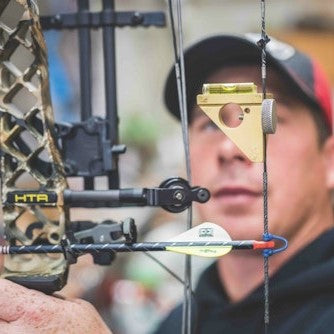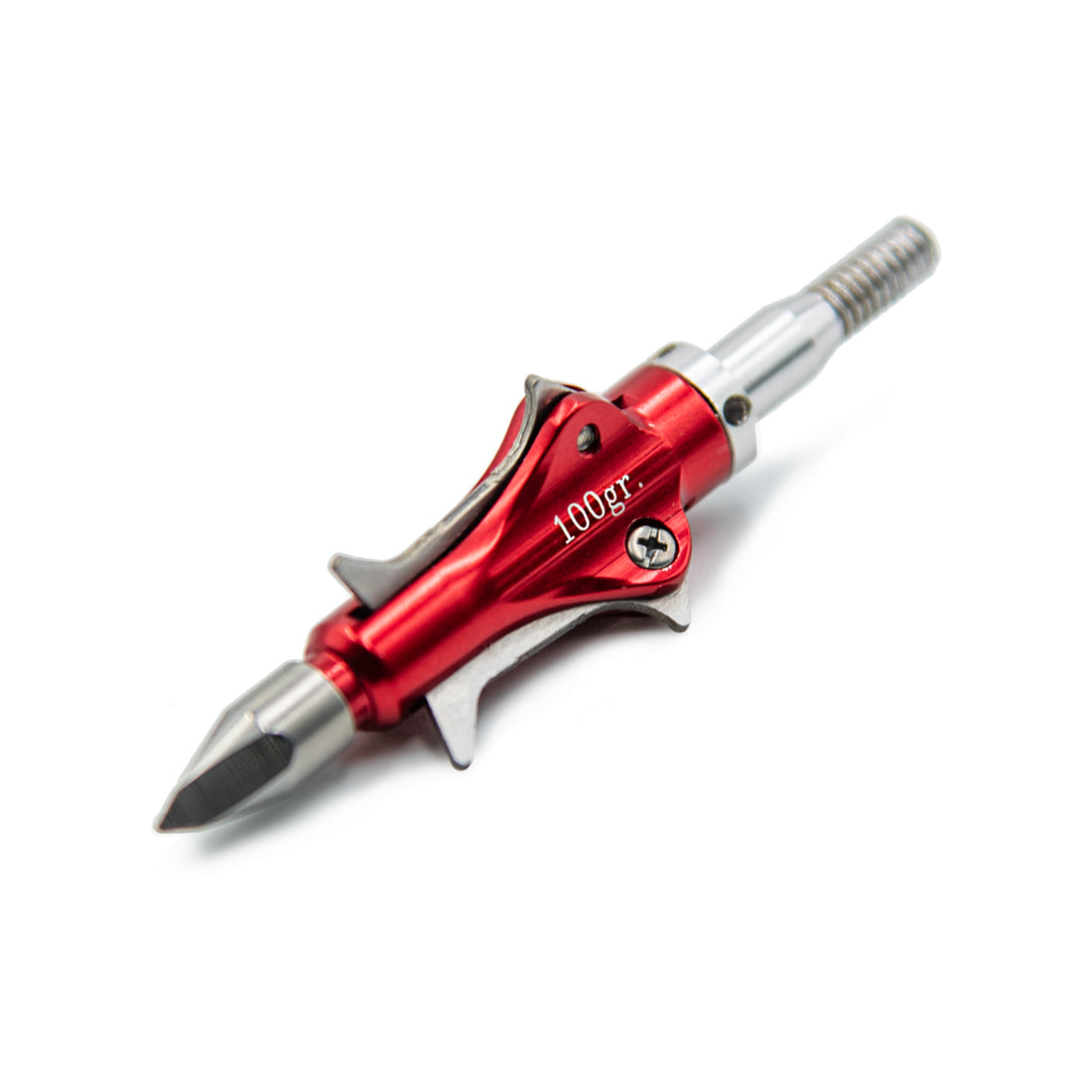Introduction to Different Types Of Broadheads
When you're looking into bowhunting, one of the essential elements you will encounter are broadheads – the sharp, bladed tips that you attach to the front of your arrows. They are crucial for ensuring your shots are as effective and ethical as possible, leading to clean, quick outcomes.
Broadheads come in various types, each designed with specific hunting scenarios and preferences in mind. They range from fixed-blade designs that are known for their reliability and strength, to mechanical versions that offer greater cutting diameters and flight accuracy, and even hybrids that combine the best features of both. Understanding the differences between these types can significantly impact your bowhunting success, offering better accuracy and performance. So, let's dive in and explore the diverse world of broadheads, equipping you with the knowledge to select the right type for your archery endeavors.
Fixed Blade Broadheads

Overview of Fixed Blade Broadheads
Fixed blade broadheads are the traditional choice for many bowhunters. These broadheads have blades that are permanently fixed in place, either as a solid piece with the shaft or attached firmly to it. This design has been used for centuries, evolving from simple stone and metal points to today's highly engineered models.
Fixed blade broadheads, like the Rexpid Nuri, are known for their reliability and durability. They are designed to withstand the impact of hitting bones or tough tissue, making them ideal for hunting larger game. With a variety of designs available, including cut-on-contact and chisel tip, hunters can choose the perfect broadhead for their specific needs.
Advantages of Using Fixed Blade Broadheads
Fixed blade broadheads have several advantages that make them a favorite among many hunters.
- First, their solid construction offers unmatched durability, allowing them to be used repeatedly without significant wear. This reliability also means a reduced risk of failure upon impact, ensuring that the broadhead will perform as expected every time.
- Secondly, their simplicity provides an ease of use that’s appealing to both novice and experienced bowhunters. They don't require any assembly or maintenance beyond basic sharpening.
- Additionally, fixed blade broadheads typically offer better penetration, especially through tough hide and bone, making them exceptionally effective for hunting large game. Another benefit is their consistency in flight, which, when paired with a well-tuned bow, results in excellent accuracy.
Mechanical Broadheads

Overview of Mechanical Broadheads
Mechanical broadheads, also known as expandable broadheads, feature blades that are retracted close to the ferrule during flight and deploy upon impact. This design allows for the broadhead to maintain a more streamlined, aerodynamic shape while in the air, and then deliver a wide cutting diameter once it hits the target.
The invention of mechanical broadheads was a game-changer in the world of bowhunting, offering hunters the possibility of making more humane kills with the increased cutting surface. There are various styles of mechanical broadheads available, including rear-deploying and front-deploying mechanisms, giving hunters options based on their preferences and hunting needs.
Advantages of Using Mechanical Broadheads
The primary advantage of mechanical broadheads is their flight performance. Due to their streamlined design, they fly more similarly to field points, making the transition from practice to hunting smoother and reducing the need for extensive adjustments.
The larger cutting diameter of deployed blades causes more extensive damage to the game, leading to quicker and more humane kills. This is particularly beneficial when accuracy is slightly off, as the increased cutting area can compensate for less-than-perfect shots. Additionally, newer models of mechanical broadheads, like the Rexpid RX-S, are designed to ensure reliable blade deployment upon impact, enhancing their effectiveness.
Common Concerns with Mechanical Broadheads
While mechanical broadheads have many benefits, there are also concerns. One of the primary issues is the potential for failure to deploy. This can be due to mechanical malfunction or not hitting the target with enough force. Hunters might worry about the broadhead not opening as intended, which would significantly reduce its effectiveness.
Another concern is durability. Because of their moving parts and the impact required to deploy the blades, mechanical broadheads can be more prone to damage than their fixed-blade counterparts.
Lastly, they often require more kinetic energy to ensure proper blade deployment, which means they might not be the best choice for hunters using lower-poundage bows. These concerns, however, have been addressed over the years with technological improvements and rigorous testing by manufacturers, making modern mechanical broadheads more reliable than ever.
Hybrid Broadheads

Overview of Hybrid Broadheads
Hybrid broadheads are a unique combination of the fixed blade and mechanical designs, bringing together the best of both worlds to meet the modern bowhunter's needs. These broadheads are designed with fixed blades that ensure reliability and penetration, supplemented by mechanical blades that deploy upon impact, offering a larger cutting diameter. The fixed components usually consist of one or two smaller blades positioned in front of or alongside the mechanical blades. This hybrid design aims to provide the guaranteed penetration of fixed blades with the wider wound channels characteristic of mechanical broadheads.
Advantages of Using Hybrid Broadheads
The primary advantage of hybrid broadheads is their versatility. They are capable of delivering the deep penetration needed for thick-skinned game, thanks to their fixed blades, while the mechanical blades ensure a wider cut, increasing the likelihood of a quick and humane kill via enhanced blood trails.
Furthermore, the fixed blades on a hybrid broadhead often serve as a failsafe, ensuring that even if the mechanical portion does not deploy, the arrow still causes significant damage. This dual-action design makes them an appealing choice for hunters who find themselves facing a variety of game sizes and conditions.
Comparison with Fixed Blade and Mechanical Broadheads
When comparing hybrid to fixed blade and mechanical broadheads, one can appreciate the unique position hybrids occupy in the broadhead market. Fixed blade broadheads are revered for their reliability and penetration but can lack in cutting diameter. Mechanical broadheads, on the other hand, offer expansive wound channels but sometimes raise concerns about their ability to penetrate tough hide or bone. Hybrid broadheads mitigate these concerns by incorporating the reliability and penetrating power of fixed blades with the cut-on-contact and expansive wound channel benefits of mechanical designs.
Tips for Choosing the Right Broadhead

Factors to Consider When Selecting a Broadhead
Selecting the right broadhead is crucial for successful bowhunting. Here are several key factors to consider:
- Hunting Game: Larger game requires deep penetration, favoring fixed or hybrid broadheads. If you're after smaller, thinner-skinned game, a mechanical broadhead may offer the cutting width needed for a quick kill.
- Bow Type: The bow's draw weight and speed can influence broadhead effectiveness. Higher-powered bows may better handle heavier, fixed blade broadheads, while lower-powered bows might be more suited to mechanicals for efficient energy transfer.
- Flight Stability: Consider the broadhead’s design and how it may affect arrow flight. A well-balanced, aerodynamic broadhead can help maintain accuracy over distance.
- Legal Considerations: Always check local and state regulations regarding broadhead use, as some areas may have restrictions on types or sizes.
Choosing the right broadhead involves careful consideration of several variables, but finding the perfect match for your hunting style and equipment can significantly improve your success and enjoyment in the field.
Broadhead Maintenance and Care

Importance of Maintaining Broadheads
Ensuring your broadheads are well-maintained isn’t just about prolonging their lifespan; it’s crucial for safety, accuracy, and performance. Sharp, well-cared-for broadheads fly more accurately and ensure a humane, efficient harvest. Dull or damaged broadheads can cause the arrow to veer off course, potentially leading to wounding rather than cleanly taking game. This doesn’t only impact your success in the field but also speaks to ethical hunting practices. Keeping your broadheads in prime condition helps guarantee that, when the moment of truth arrives, your equipment won’t let you down.
How to Properly Care for Broadheads
Caring for your broadheads properly requires both regular checks and certain maintenance routines. Here’s how to keep them in top condition:
- Inspection: Regularly inspect your broadheads for any signs of damage or wear. Look for bent blades, dull edges, or loose components. It’s better to find and address these issues during maintenance than to discover them in the field.
- Cleaning: After each use, clean your broadheads thoroughly. You can use warm soapy water to remove any dirt, blood, or debris. Make sure they are completely dry before storing them to prevent rust.
- Sharpening: Keeping your broadheads sharp is essential. A sharp blade is more efficient and humane. Use a broadhead sharpener as recommended by the manufacturer. Follow the proper sharpening angles to ensure peak performance.
- Storage: Store your broadheads in a dry, cool place. Keeping them in a protective case is ideal to prevent accidental injury and shield the blades from the elements.
By dedicating time to the maintenance and care of your broadheads, you invest in your success as a hunter. Not only do you ensure that your equipment is reliable, but you also uphold the ethics of responsible hunting.
Conclusion
Choosing the right broadhead for your bowhunting adventure involves understanding the specific needs of your hunt and the performance characteristics of fixed blade, mechanical, and hybrid broadheads. While fixed blade broadheads offer reliability and stout construction, mechanical broadheads impress with their flight accuracy and cutting diameters. Hybrids, wonderfully blending the strengths of both, present a promising option for those indecisive between the ruggedness of fixed and the precision of mechanical types.
Whether venturing into dense woodlands or open fields, stay equipped, practice regularly, and may your arrows fly true! Happy bowhunting!















